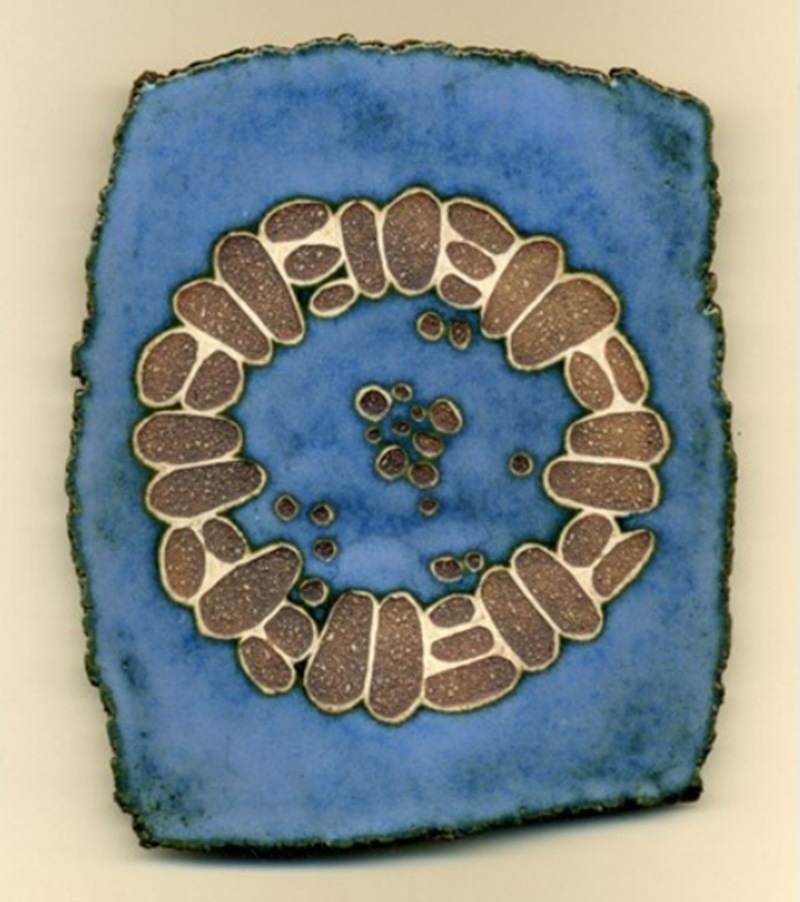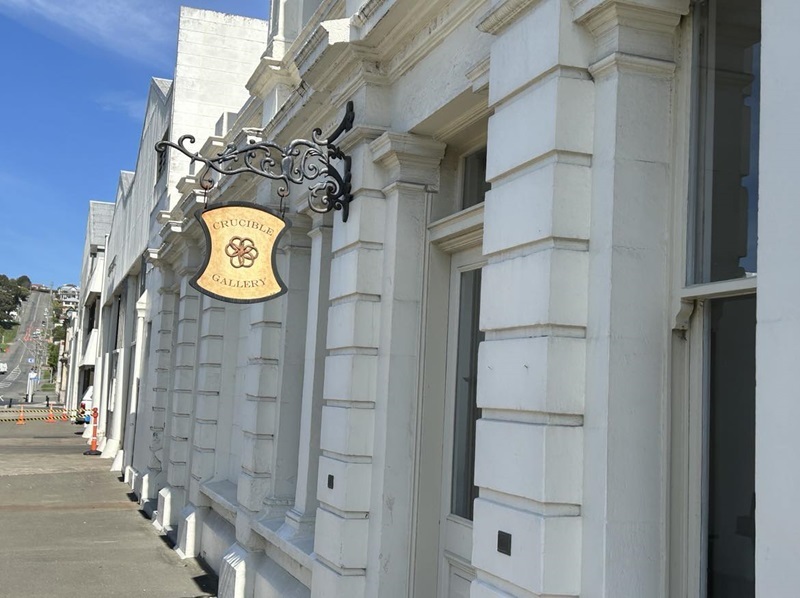Crucible residency forges innovative art opportunity
Ashley Smyth
24 September 2024, 4:02 AM
 Karen Aitken works on some clay in Crucible Art Studio, as part of her residency which began last month. Photo: Ashley Smyth
Karen Aitken works on some clay in Crucible Art Studio, as part of her residency which began last month. Photo: Ashley SmythOne month into her residency at the newly established Crucible Art Studio, Ōamaru artist Karen Aitken is enjoying the chance to connect her two passions - science and creativity.
The Crucible Art Studios and Gallery were officially opened earlier this month at Gillies Metaltech in Tyne Street, tying in with the first Crucible Artist Residencies beginning with Karen and also Wellington artist Sian Quennell Torrington.
The studios are based in the Pattern Shop where, for many years, pattern makers have crafted the patterns to be used to make moulds for the foundry.
In addition to the existing Crucible Gallery, two new exhibition spaces have been created, which had previously been used for pattern storage.
Gillies was acquired by the Hynds Group from the Gillies family 21 years ago, and the gallery, studio and residency programme has been instigated by the Hynds Foundation - a charitable trust established eight years ago, as a way for the group to give back to the communities that support its companies.
The residency launched in February and the four chosen artists were announced in June. Karen began her 16-week stint in August, and Sian’s 12 weeks started earlier this month.
Motoko Kikkawa and John Ward Knox, both living in Dunedin, will begin their residencies in February next year, and the next round of applications opens in March.
Karen completed an art diploma through Aoraki Polytechnic in 2014, and is involved in the Ōamaru art scene as part of Crafted Gallery, a co-operative retail space on Harbour Street, where a group of local artists display and sell their work.
She facilitates life drawing classes at the Harbour Street Collective Cafe and also teaches primary children after-school art classes.
Karen intends to spend as many hours as possible at the Crucible Studios during her residency, to maximise the time she has available.
“I've never done a residency before, so this is totally new for me, and I really, really appreciate the opportunity to be here. It's awesome.
“It's a great way to explore and be creative, and we're connecting with the staff here and the technologies. That's a really special thing as well,” she says.
By the end of November, Karen hopes to have a collection of sculptures, drawings and cast-iron pieces, and possibly some mixed-media ceramic and cast iron, to exhibit and put up for sale.
A lot of her work focusses on diatoms, a type of single-cell algae, encased in silica “like a glass skeleton”, which she is passionate about.
“They're absolutely beautiful when viewed through a microscope.”
Waitaki is home to a diverse range of well-preserved diatom fossils which are more than 30 million years old, and a feature of the Waitaki Geopark.

One of Karen's ceramic diatoms Diatomaceus. Photo: Hynds Foundation website
“Before art, I had a background in science,” Karen says. “So, that's all part of the science part. I like putting those together. And the Victorians, they looked at diatoms under a microscope and created artworks by arranging the diatoms. I like that Victorian/science/art combination as well.
“This is a very Victorian process, the casting of iron as well.”
The process of casting the iron was a foreign one to Karen before she began her residency, and she finds it “amazing".
Patterns (usually made of wood) are used to create a negative space in sand, and molten metal is then poured into the mould where it hardens.
She has been experimenting with making her patterns out of papier-mache, and seeing if clay, and potentially even latex will work.
“It’s very experimental… we’re just seeing what we can get away with,” she says.
She is also trialling working in the sand directly, for example poking holes in it, “just to make an interesting pattern”.
The Crucible is named for a crucial piece of foundry equipment. Metaphorically, it symbolises an environment where individuals, concepts, and experiences come together to create something new and forms the DNA of our residency, the Hynds Foundation website says.
“The crucible is a vessel in which materials yield to intense heat before being transformed into an object. Metal making has often been described as part science, part magic…it is seldom a lone activity, requiring a team to bring the concept to fruition.”
Residency co-ordinator Katherine Kovacs, herself an established artist, facilitated the residency selection process, and the artists were chosen by a panel of three - so different perspectives could come into play, she says.
“You're looking for a good fit, quality of work and an exhibition history. And we also ask for references.”
By the end of their residency, artists are expected to produce a body of work to exhibit, and are also encouraged to engage with the local community and spread the word about what they are doing.
They are paid a stipend, and artists from out of town are provided help with accommodation costs. This is the only artist residency in a metal foundry that Katherine is aware of.
Katherine says Karen stood out to the panel for her involvement in the community.
“Not just for her ceramic work, but for her involvement in life drawing.”
And Sian, who the Waitaki App hopes to meet with soon, seems very engaging, positive and community-minded, she says.
The Hynds Group of Companies, and Hynds Foundation
The Hynds Group owns six companies in New Zealand and Australia, including Gillies, that are centred around the civil construction industry.
Each of the companies contributes annually to the Hynds Foundation, which six trustees - all Hynds family members - oversee.
The group works to identify and support initiatives that align with its purpose - to enrich and support New Zealand communities, and is guided by five pillars - to support arts and culture, health, education, community well-being, and more recently - environmental sustainability.
The vision the Hynds Foundation had for three of the buildings, which played a vital role in the Gillies business for decades, has now been realised with the help of Ōamaru-based architect Virginia Barlow. They have been transformed into spaces the group hopes will inspire creativity and community engagement.
The Crucible Art Studios and Gallery will soon be accessible to the public and showcase the works of the resident and visiting artists through exhibitions and events.

Outside Crucible Gallery on Tyne Street. Photo: Ashley Smyth




